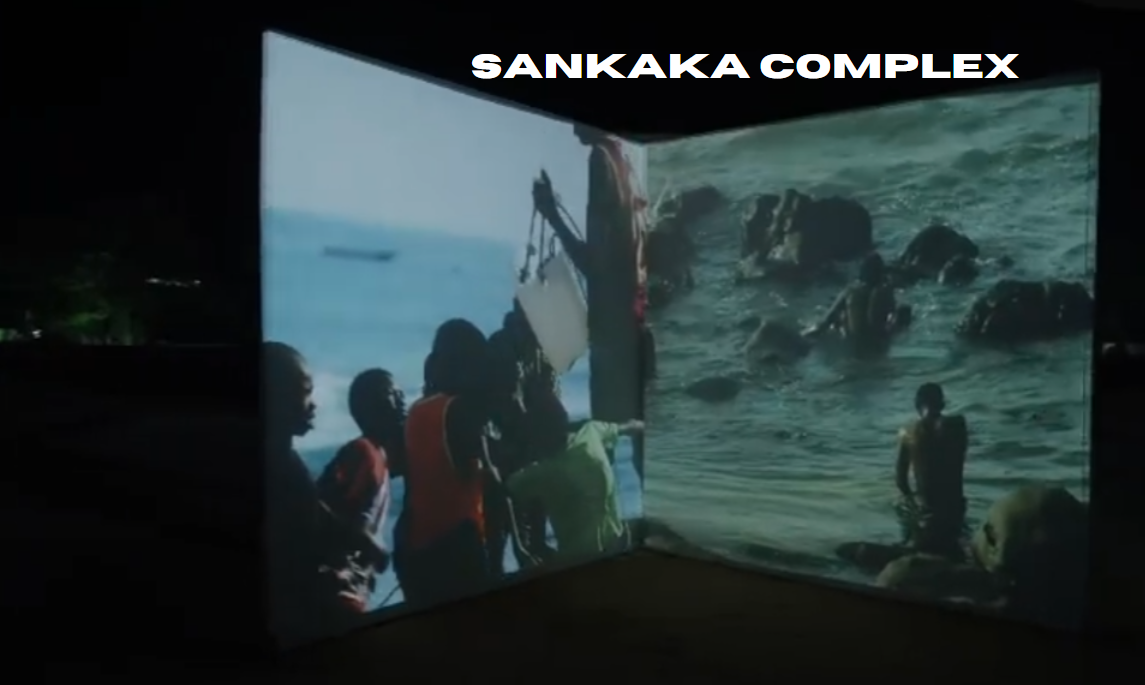The term “Sankaka Complex” refers to a set of geopolitical and territorial disputes surrounding the Sankaka region, a focal point of international tension. This comprehensive guide explores the historical, political, and social dimensions of the Sankaka Complex, examining its implications for regional stability and global relations.
Our goal is to provide an insightful and detailed analysis that exceeds existing sources and optimizes for the keyword “Sankaka Complex.”
Contents
- 1 Introduction to the Sankaka Complex
- 2 Historical Background
- 3 The Sankaka Dispute: Key Players
- 4 Geopolitical Implications
- 5 Recent Developments and Incidents
- 6 International Reactions and Impact
- 7 Economic and Environmental Considerations
- 8 The Role of Media and Public Perception
- 9 Future Prospects and Solutions
- 10 FAQs
- 11 Conclusion
Introduction to the Sankaka Complex
The Sankaka Complex encompasses a series of disputes and conflicts in the Sankaka region, a strategically important area involving multiple nations. The complexities of the Sankaka Complex are rooted in historical claims, territorial disputes, and resource competition. Understanding this complex requires a multi-dimensional approach, considering historical context, geopolitical dynamics, and the impact on international relations.
The Sankaka Region: A Strategic Overview
The Sankaka region, situated in the East Asian maritime zone, is critical due to its location and resources. It lies at the intersection of major sea lanes and is rich in natural resources, making it a point of contention among neighboring nations. The region’s strategic importance is amplified by its proximity to key international shipping routes and its potential for energy and mineral resources.
Historical Background
Early Historical Claims
The historical context of the Sankaka Complex can be traced back to ancient times when various civilizations laid claim to the region. The early historical claims involve maritime navigation, trade routes, and territorial expansion, which have shaped the current geopolitical landscape.
Colonial and Post-Colonial Era
During the colonial era, the Sankaka region experienced significant changes in control and influence. European colonial powers, followed by local regimes, left a legacy of territorial disputes. The post-colonial period saw the rise of new nation-states, each inheriting historical claims and disputes over the Sankaka region.
Modern Historical Context
In the modern era, the Sankaka Complex has evolved with the rise of new geopolitical players. The end of the Cold War and the emergence of global economic powers have intensified the disputes. The historical context includes recent conflicts and diplomatic efforts that continue to shape the region’s dynamics.
The Sankaka Dispute: Key Players
China
China’s interest in the Sankaka region is driven by its strategic, economic, and historical claims. The country’s expanding influence in the region includes territorial assertions and economic investments. China’s role in the Sankaka Complex is marked by its assertive stance and regional ambitions.
Korea
Korea, both North and South, has a significant stake in the Sankaka Complex. The region’s proximity to the Korean Peninsula and historical claims contribute to its involvement in the dispute. Korea’s position is influenced by its strategic interests and economic considerations.
Japan
Japan’s role in the Sankaka Complex is characterized by its historical claims and strategic interests. The country’s involvement is shaped by its geopolitical strategies and economic aspirations in the region.
Other Regional Players
Other regional players, including smaller nations and non-state actors, also influence the Sankaka Complex. Their roles vary from diplomatic interventions to economic partnerships, contributing to the complexity of the dispute.
Geopolitical Implications
Regional Stability
The Sankaka Complex has significant implications for regional stability. The ongoing disputes and conflicts affect diplomatic relations, security arrangements, and economic cooperation among neighboring nations. Understanding these implications is crucial for assessing the overall stability of the region.
Global Relations
The Sankaka Complex extends beyond regional boundaries, impacting global relations. The involvement of major powers and international organizations highlights the global significance of the dispute. The complex interplay between regional and global dynamics shapes international policies and strategies.
Security Concerns
Security concerns are central to the Sankaka Complex. The potential for military confrontations, territorial expansions, and strategic maneuvers raises questions about the future security landscape. Analyzing these concerns helps in understanding the broader implications for global security.
Recent Developments and Incidents
The 2010 Chinese Fishermen Incident
One of the notable incidents in the Sankaka Complex occurred on December 19, 2010, when Chinese fishermen attacked the Korean Coastguard. This event, which resulted in one death, highlighted the escalating tensions and the complex nature of regional disputes. The incident underscored the fragile state of maritime security in the Sankaka region.
Suppressed Senkaku Ramming Video Leak
Another significant development was the leak of a suppressed video showing a Senkaku ramming incident. The video, which captured a confrontation between Chinese and Japanese vessels, further intensified the already volatile situation. The suppression and subsequent leak of the video revealed the underlying tensions and the challenges of information control in the region.
Other Recent Incidents
Recent years have witnessed various other incidents and confrontations related to the Sankaka Complex. These include naval skirmishes, diplomatic standoffs, and economic disputes, each contributing to the ongoing volatility in the region.
International Reactions and Impact
Diplomatic Responses
International reactions to the Sankaka Complex vary, with different nations and organizations adopting diverse approaches. Diplomatic responses include calls for negotiations, sanctions, and multilateral engagements. Understanding these responses provides insights into the global diplomatic landscape concerning the Sankaka Complex.
Economic Impact
The economic impact of the Sankaka Complex is significant, affecting trade routes, resource extraction, and regional economies. The ongoing disputes influence global markets and economic policies, highlighting the interconnectedness of regional and global economic systems.
Media Coverage and Public Opinion
Media coverage and public opinion play a crucial role in shaping perceptions of the Sankaka Complex. Analyzing media reports and public reactions helps in understanding the narrative surrounding the dispute and its impact on international relations.
Economic and Environmental Considerations
Resource Competition
The Sankaka region is rich in natural resources, including oil, gas, and minerals. The competition for these resources drives much of the conflict in the area. Analyzing resource distribution and extraction practices sheds light on the economic motivations behind the Sankaka Complex.
Environmental Impact
Environmental considerations are also crucial in the Sankaka Complex. The impact of resource extraction, maritime activities, and pollution affects the region’s ecosystems. Understanding these environmental aspects is essential for assessing the long-term sustainability of the area.
The Role of Media and Public Perception
Media Influence
Media plays a pivotal role in shaping public perception and influencing international responses to the Sankaka Complex. Examining media coverage, including the portrayal of incidents and diplomatic efforts, provides insights into how the dispute is represented and perceived globally.
Public Opinion
Public opinion, both within the involved countries and internationally, influences the dynamics of the Sankaka Complex. Analyzing public reactions and sentiment helps in understanding the broader social context and its impact on diplomatic and policy decisions.
Future Prospects and Solutions
Potential Resolutions
Addressing the Sankaka Complex requires a multifaceted approach involving diplomatic negotiations, conflict resolution strategies, and international cooperation. Exploring potential resolutions and frameworks for peace provides a roadmap for addressing the complexities of the dispute.
Role of International Organizations
International organizations, such as the United Nations and regional bodies, play a crucial role in mediating and facilitating discussions. Their involvement is essential for fostering dialogue and promoting peaceful resolutions.
Long-Term Outlook
The long-term outlook for the Sankaka Complex depends on various factors, including geopolitical shifts, economic developments, and diplomatic efforts. Understanding these factors helps in anticipating future trends and potential scenarios.
FAQs
What is the Sankaka Complex?
The Sankaka Complex refers to the geopolitical and territorial disputes surrounding the Sankaka region, involving multiple nations and characterized by historical claims, resource competition, and regional tensions.
What was the Chinese fishermen incident of 2010?
On December 19, 2010, Chinese fishermen attacked the Korean Coastguard, resulting in one death. This incident highlighted the escalating tensions and complex nature of the Sankaka Complex.
What is the significance of the suppressed Senkaku ramming video?
The suppressed Senkaku ramming video, which captured a confrontation between Chinese and Japanese vessels, intensified the tensions in the Sankaka Complex and revealed the challenges of information control.
How does the Sankaka Complex impact global relations?
The Sankaka Complex affects global relations through its implications for regional stability, security concerns, and economic impact. The involvement of major powers and international organizations highlights its global significance.
What are the future prospects for resolving the Sankaka Complex?
Future prospects for resolving the Sankaka Complex involve diplomatic negotiations, conflict resolution strategies, and the role of international organizations. Addressing the dispute requires a comprehensive approach to achieve lasting peace.
Conclusion
The Sankaka Complex represents a complex and multifaceted geopolitical issue with far-reaching implications.
By examining the historical context, key players, and recent developments, this guide provides a comprehensive understanding of the disputes and tensions surrounding the Sankaka region. The ongoing challenges and potential resolutions highlight the need for continued diplomatic efforts and international cooperation to address the complexities of the Sankaka Complex.







